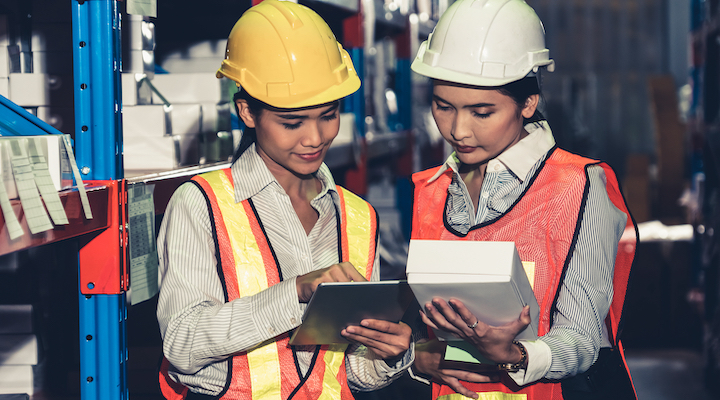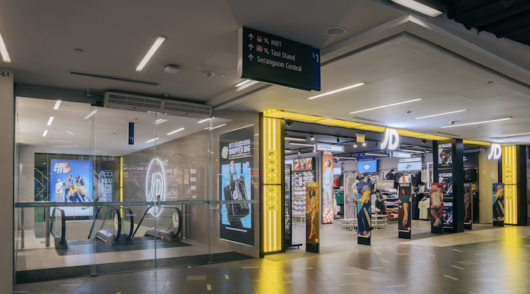With the peak retail season nearing, inefficiencies in the supply chain will inevitably be exposed: inaccurate data and congested systems will lead to delays in order fulfilment and compromise the ability of retailers and suppliers to meet desired service levels.
At the same time, the “Amazon effect” continues to drive customer expectations for fast, low-cost delivery to any address, anywhere in the world, the ability to place orders through multiple channels, and emerging services like buy-online-pickup-in-store (BOPIS), and kerb-side collection.
Logistics is the vehicle for making those customer expectations a reality. But how can suppliers minimise the various inefficiencies in the supply chain this coming peak season, and preserve customer and supplier confidence, while still protecting profit margins?
“Logistics at once represents the single biggest cost for many companies – and, increasingly, the single biggest differentiator of customer service,” observes Daniel Kohut, VP – Australia & New Zealand with Blue Yonder, a global leader in digital supply chain and omnichannel commerce fulfilment.
“With inflation sending fuel costs and other expenses through the roof, labour shortages leading to understaffed warehouses and a shortage of drivers in some markets, disruptions in demand, production shutdowns, materials shortages and blocked shipping routes, meeting customer needs is now even tougher.”
The result of these trends is that real-time visibility, strategic labour management, and integrated e-commerce capabilities have never been more crucial – especially in the lead-up to – and during – the peak season.
Kohut says the digitalisation of logistics – from the first mile to the last mile – is no longer optional for today’s retailers. “It’s a necessary, crucial cost of doing business in today’s incredibly challenging, customer-centric business landscape.”
Digitalised solutions can make smart, profitable, customer-centric decisions using advanced technologies – enabled by Artificial Intelligence (AI) and machine learning (ML) – that are capable of monitoring conditions along the entire end-to-end supply chain.
They can also deliver efficient management of warehouse workforces where robots have been deployed alongside humans to overcome labour shortages, adding complexity to day-to-day operations. As Kohut points out, integrating human and robotic labour requires strategic management to ensure maximum productivity and agility.
“All of these factors and more illustrate how the status quo of a siloed, manual environment with limited supply chain visibility is insufficient in the modern retail economy,” says Kohut. “A proactive approach, using intelligent optimisation, transportation networks and integrated systems, is necessary to predict and address potential problems.”
According to Blue Yonder, logistics teams today need to acquire six key advanced technologies to maximise their service and cost outcomes:
- Digital control towers that sense exceptions and disruptions at the earliest opportunity.
Digital control towers sit in the centre of the supply chain ecosystem, gathering current data, which allows them to predict or identify problems at the earliest possible opportunity. From small events like a missed delivery to sweeping disruptions like a natural disaster, digital control towers can sense the problem in advance, communicate it internally and externally, and allow a proactive, synchronised response across the entire network. Blue Yonder’s digital control tower, running on Microsoft Azure, manages end-to-end visibility of events and critical alerts to ensure uninterrupted, high-quality, reliable service.
- Intelligent decision engines that ingest enormous volumes of data and drive optimal resolutions.
Human analysts, manual planning processes and spreadsheets are insufficient to manage all the data gathered from thousands of simultaneous deliveries occurring at any one time – let alone translate it into action plans and recommendations. That’s where intelligent decision engines enabled by advanced AI and ML come into play, weighing factors that could affect logistics performance, considering intelligent trade-offs and making recommendations with a “good for the network” perspective that goes far beyond functional targets.
- Collaboration platforms to connect and synchronise the logistics network around a shared plan.
Just as disruptions affect every part of the extended logistics network, so too the entire network must collaborate on responses that maximise outcomes for every participant. Delivering a collaborative, orchestrated response depends on creating real-time connectivity across the network via collaboration platforms. Not only do collaboration platforms help reset the logistics network as disruptions occur, but these AI-enabled platforms also help trading partners work together to optimise freight capacity, labour resources, warehouse space and service levels daily.
- Task optimisation solutions to ensure that all processes across the network are as efficient and accurate as possible.
Retailers today are expected to manage far more than simple deliveries from warehouse to store. Consumers embracing online shopping expect to receive smaller orders, be able to vary delivery locations or timeframes and even split orders. Retailers trying to deliver on customer expectations must still focus on achieving this profitably when simultaneously facing labour shortages and rising costs. Advanced technologies make the logistics workforce much more productive by reducing travel times, increasing throughput and capacities, improving fill rates, and maximising the accuracy of everyday tasks such as picking and load building.
For example, Nebraska Furniture Mart recorded that during just the first seven months after first deploying Blue Yonder’s solution in one of its locations, the company was able to improve its labour productivity by 50 per cent.
- Robotics & process automation to help keep service levels high, reduce costs and combat labour shortages.
As the use of robots in warehouses and distribution centres becomes more common, there is a growing trend to organise for humans and machines to work together in seamless, fluid ways, with the best resource for the task at hand chosen in real-time as conditions change. Leading warehouse teams are leveraging robotics, collaborative robots or “cobots,” drones, and a variety of automation tools such as picking bots to complement their human capabilities.
DHL Supply Chain, for example, has implemented robotics and automation in 2000 sites worldwide, linking these capabilities directly to the warehouse management software.
- Automated procurement to digitalise key logistics transactions and build a strong carrier network for greater resilience.
Assembling a robust, flexible transportation network that can be scaled cost-effectively as conditions change is significant in first- to last-mile fulfilment today. Legacy systems and manual processes are insufficient to build a carrier network, analyse transportation options in real-time and secure the best price.
Again, digitalisation provides the answer. Dynamic price discovery solutions act as a single point of integration for shippers and carriers, replacing tedious manual processes with single-click speed and accuracy. Logistics teams can dynamically access the best freight rates across both contracted and non-contracted carriers, enabling them to bring in additional capacity during peak demand periods. By seeing real-time prices – which reflect current demand-and-supply effects – they can make better-informed, more profitable tendering decisions.
These six advanced technologies – explained in more detail in an ebook produced by Blue Yonder (which you can download here) – combine to create a truly digital supply chain. They make logistics networks as seamless as possible, increase collaboration across organisations, and enable both inbound and outbound visibility and control.
- Blue Yonder offers the only technology suite that delivers on the promise of first-to-last-mile optimisation, incorporating transportation management, warehouse management, and order management. For further information click here.







